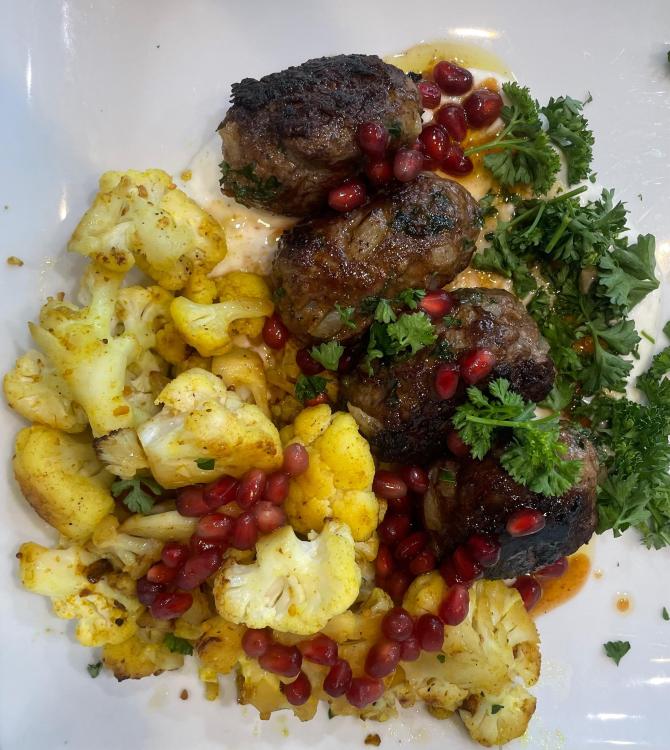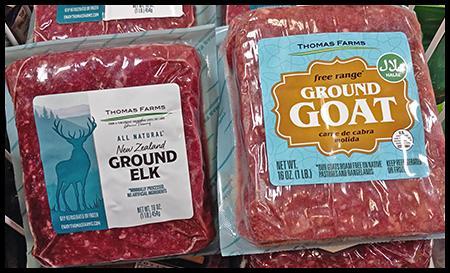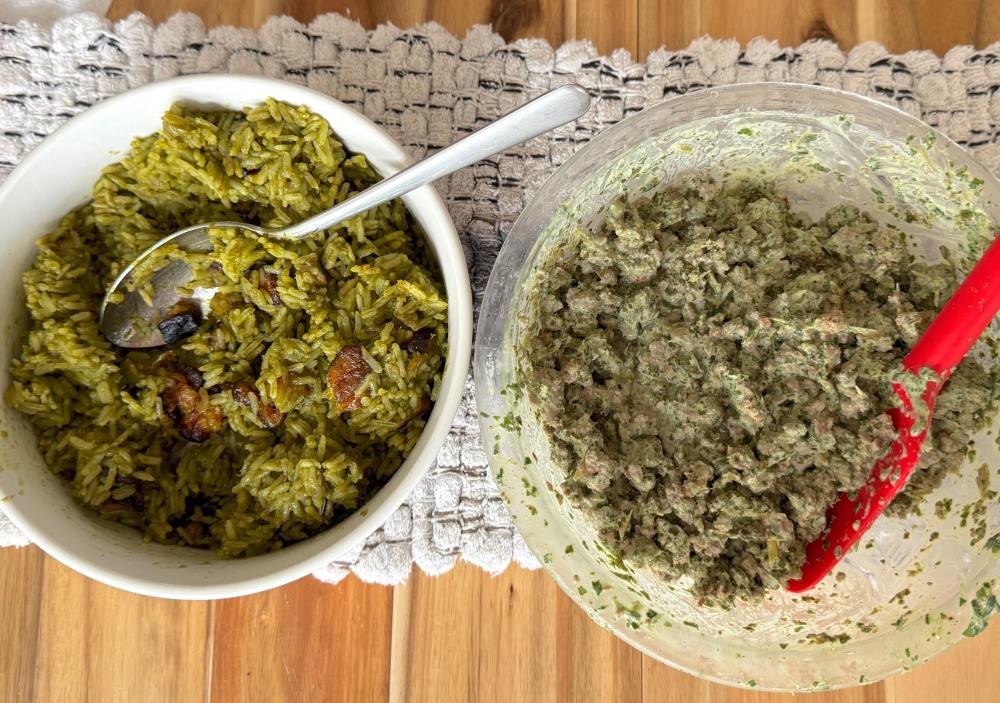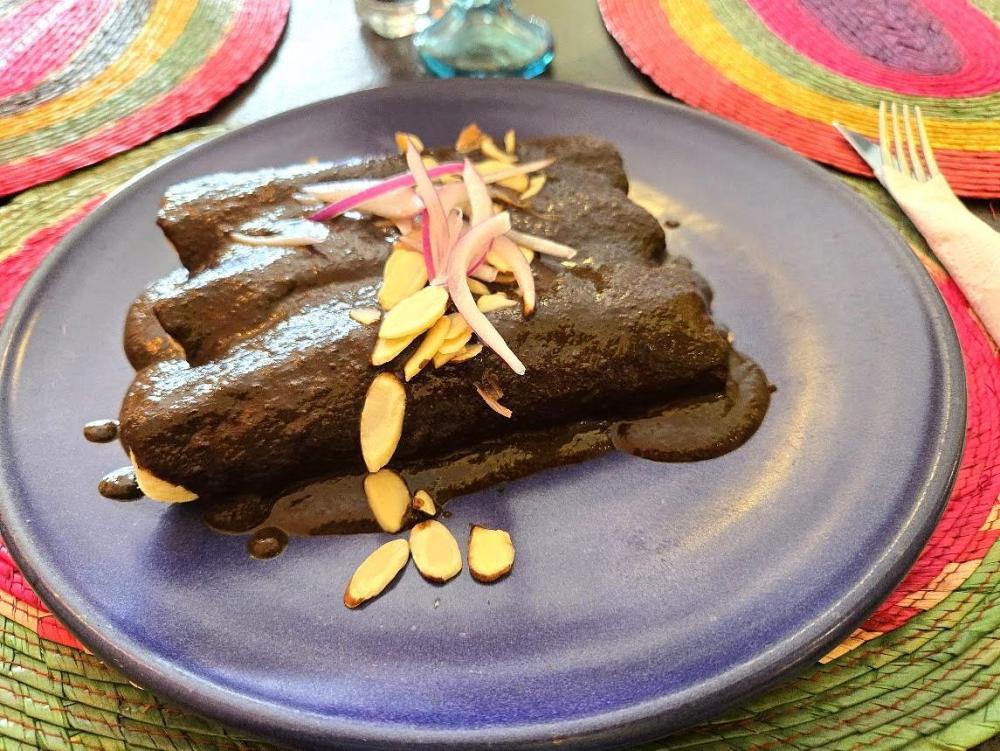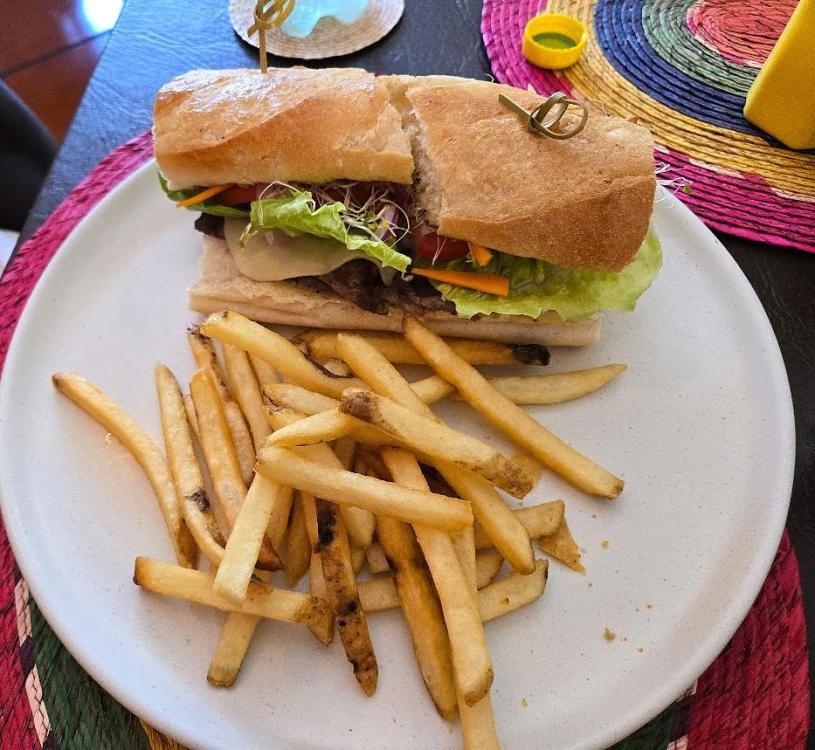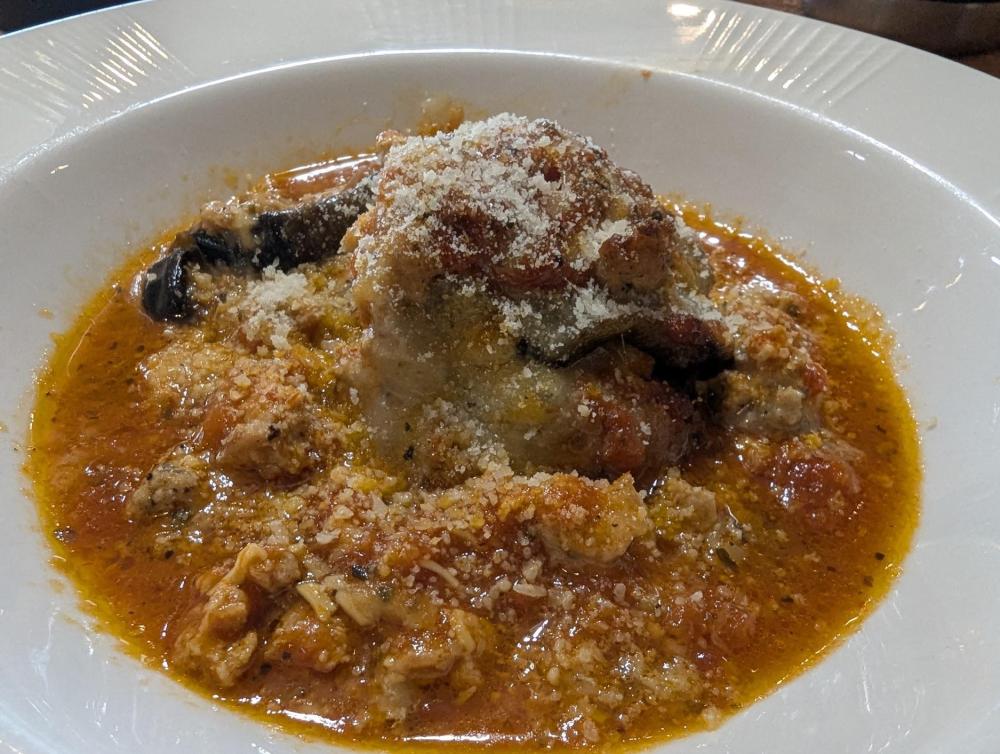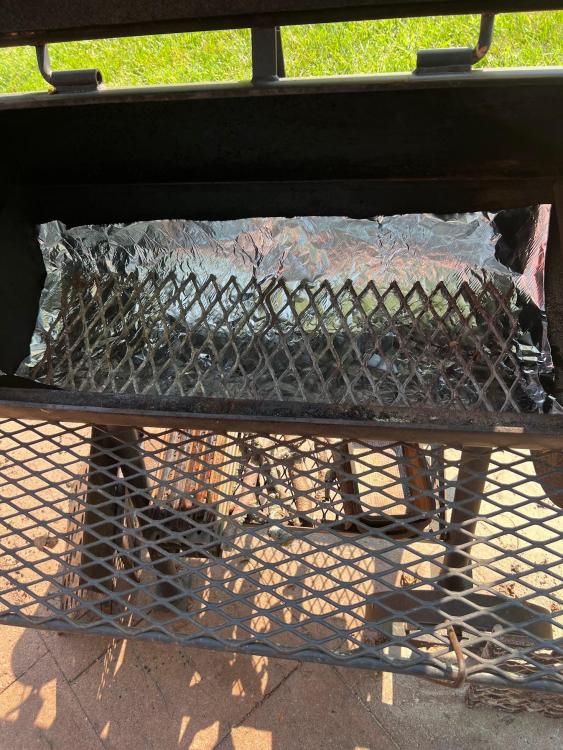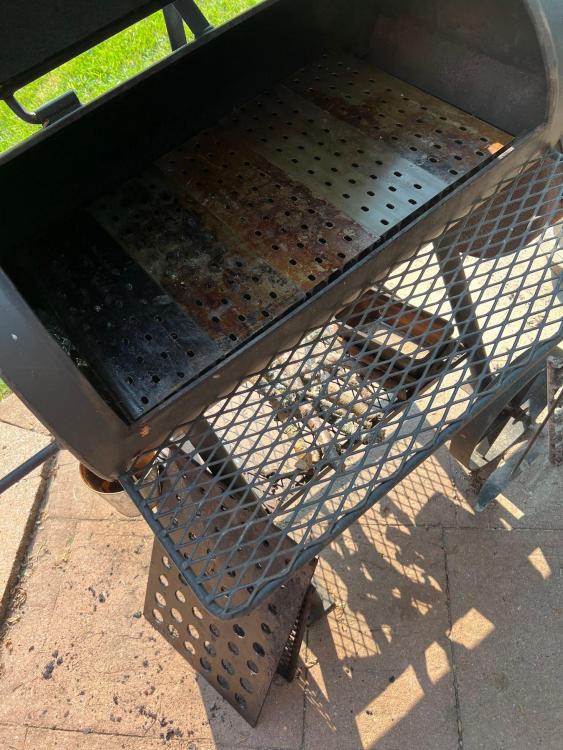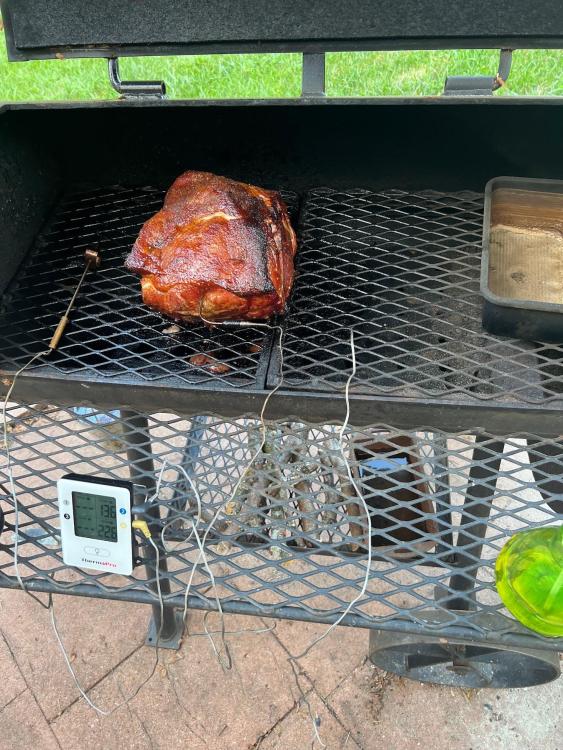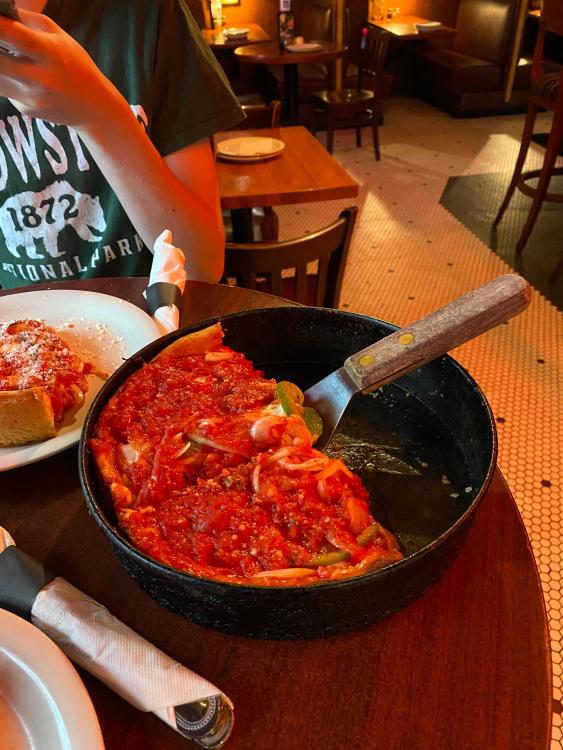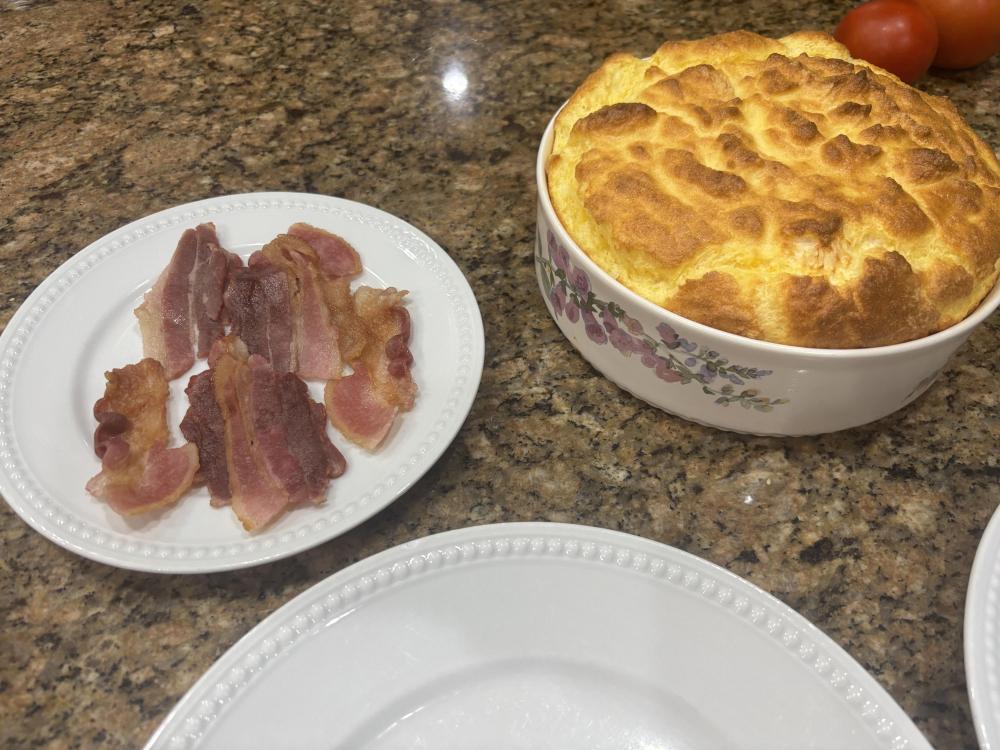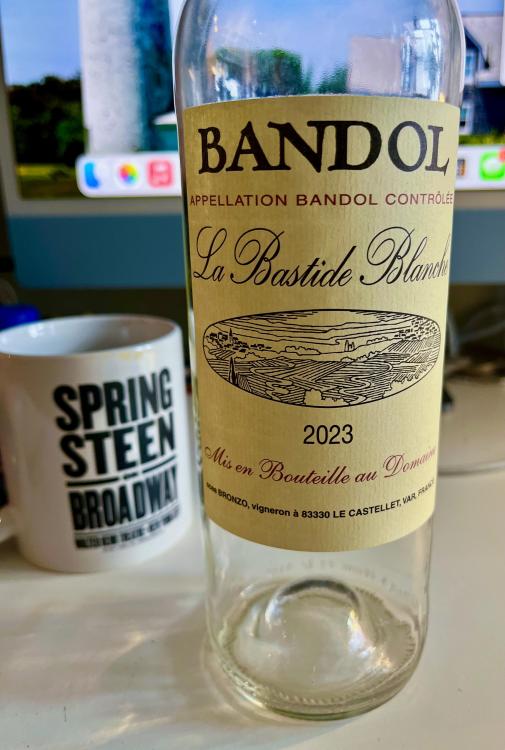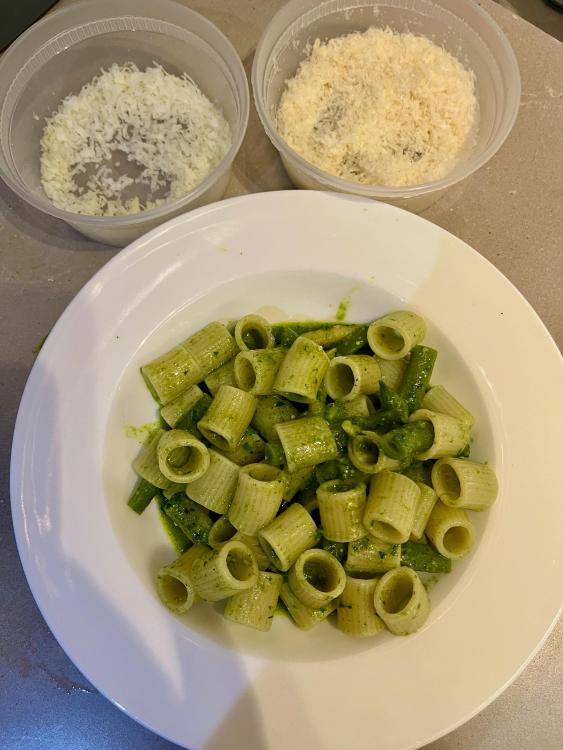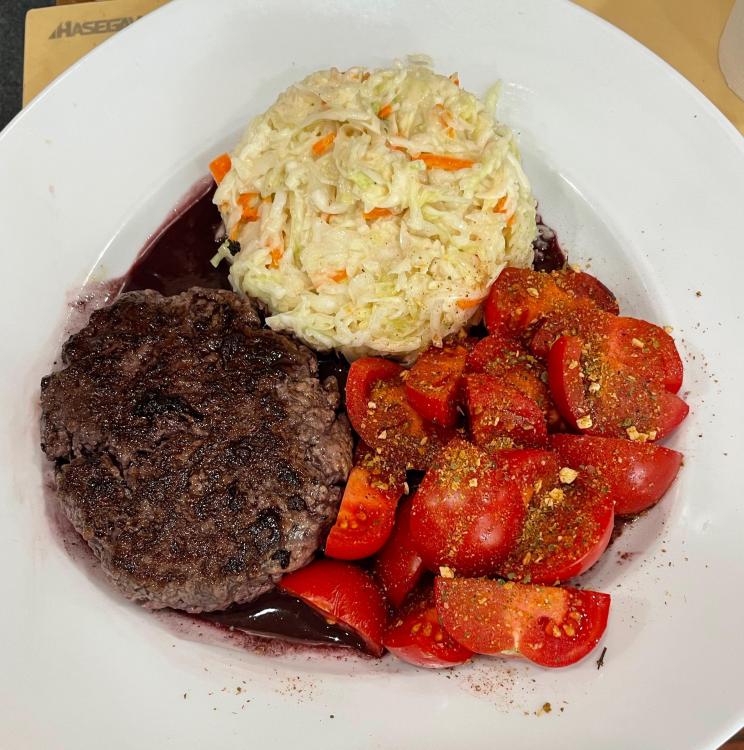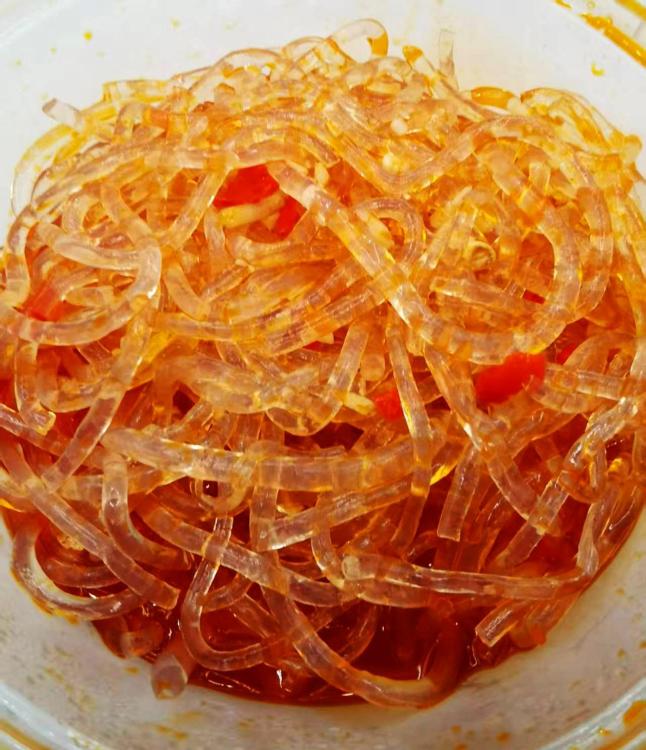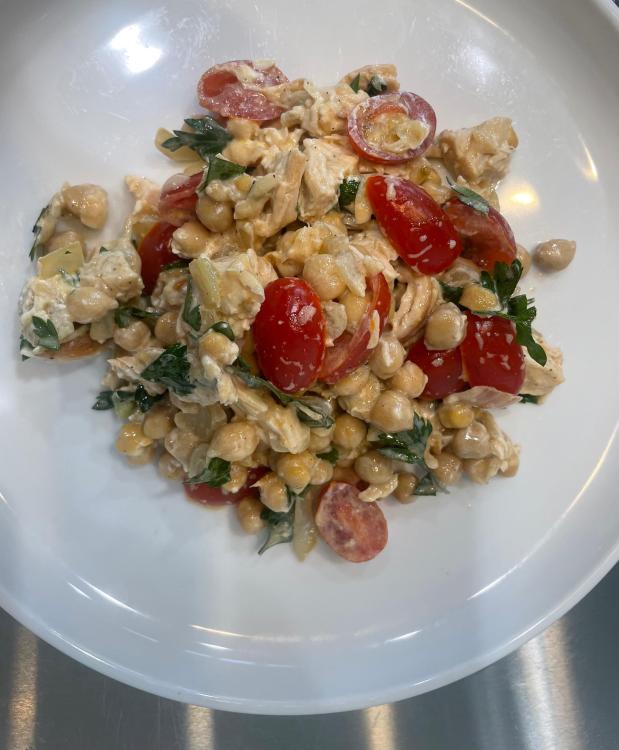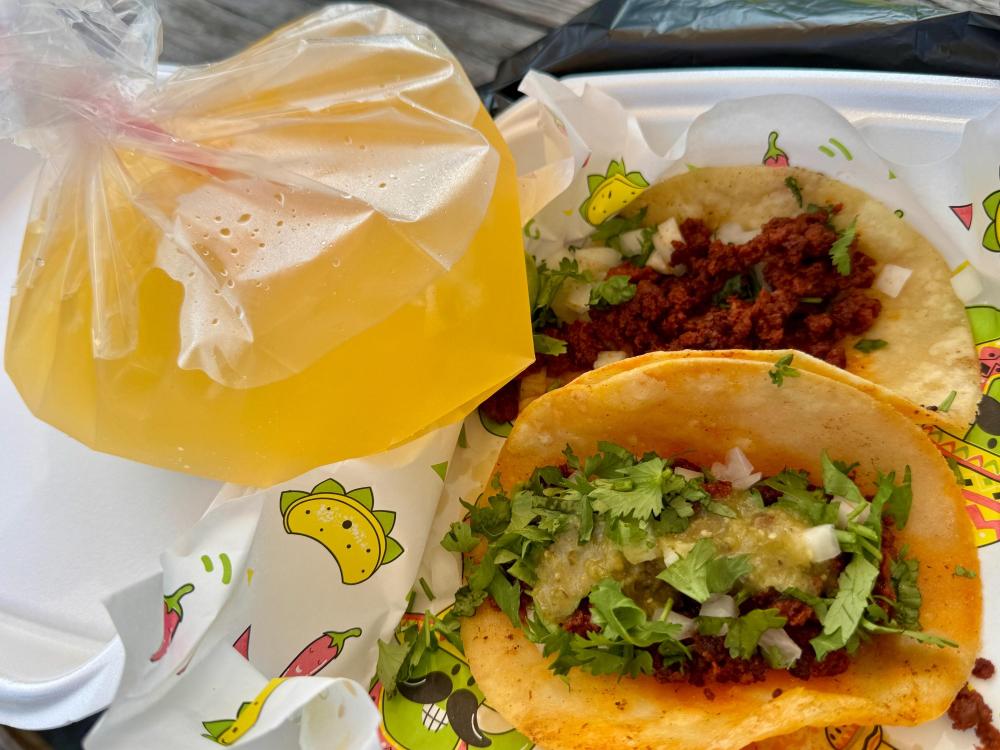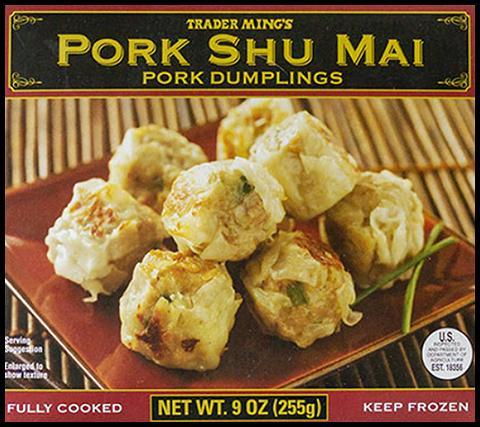-
Welcome to the eG Forums, a service of the eGullet Society for Culinary Arts & Letters. The Society is a 501(c)3 not-for-profit organization dedicated to the advancement of the culinary arts. These advertising-free forums are provided free of charge through donations from Society members. Anyone may read the forums, but to post you must create a free account.
All Activity
- Past hour
-
Just curious, what do you mean be it being "a thing?"
-
That was a good read, thanks! Back in the 80s one of Canada's most popular food personalities was English-born James Barber, who was an engineer by trade. He was raised by a grandmother who he described frequently as "the kind of English cook who gives English food a bad name," so understandably food was not one of his big interests in young adulthood. But as he plied his trade as an engineer, moving from country to country, he began to notice a lot of parallels between foods from different cultures (I remember him specifically calling out Italian stracciatella and Chinese egg-drop soup, for example). That led to him taking an interest in food for the first time, and became a theme in his unlikely second act as a cookbook author and TV show host. Frequently, in the course of an episode of his show, he would get to a specific point in a recipe and explain that from here you could take it in this, this, or that direction by altering the remaining ingredients and garnishes you added (and those three examples might be, perhaps, Thai, Russian or French). It was a fun show. One thing I always liked about it was that there was no "magic of television" going on. Everything he did on his show was cooked in real time over the course of the 30 minute-less-commercials taping, so you knew if he did it then you could too (maybe not quite as smoothly, but pretty close). My own similar "lightbulb" moment came in a little Portuguese greasy-spoon on Vancouver's Commercial Drive. Their chalkboard special one day was salt cod and potatoes, and having eaten it many times in its Newfoundland incarnation, I thought it'd be interesting to see how different it was. It came out drizzled with olive oil and covered with olives, which at first blush I thought was pretty exotic and left-field (in my defense, I was still a teen). But upon reflection, it wasn't that big a departure. In Newfoundland, the usual preparation involved dicing salt pork fat into cubes and rendering them, then drizzling the rendered fat over the fish and potatoes, before sprinkling the crunchy, salty, rendered cubes of fat ("scrunchins" or "scruncheons," spelling optional/personal preference) over everything. Well, the olive oil served the same role as the hot pork fat (and was a definite upgrade in many respects). And while those olives lacked the crunch of the scrunchins, they brought the same salty element to the meal. That was a real watershed moment for me, in terms of my own interest in/appreciation of food. Vancouver was a good place to light that spark, it was already a very cosmopolitan place even in the early 80s. So... yeah, that plate of bacalhau, and the train of thought it provoked, is probably why I ended up here at eG 20 years later (and at culinary school, at around the same time).
- Today
-
Great article, thanks for sharing. ❤️
-
For many years I have made my beer money by writing and translating for one of China's top wine trade publications. The editor-in-chief is an old friend. This is one such article of mine which appeared bi-lingually in their flagship magazine, several years ago. I have spared you the Chinese version. In Lombardy, Italy, in the town of Desenzano del Garda, on the banks of Lake Garda, Italy’s largest lake, it is a warm spring Sunday morning. The Gallo family are gathering together for lunch. Four generations will be present for the meal. A large table is set out in the garden and the noise of chopping, the banging of pans and the voice of Mama Gallo issuing instructions is emanating from the kitchen. Eventually all the family arrive and take their places around the table, which by now is covered with food. A short prayer of thanks is said and everyone begins to eat. This meal will last for hours. The excited talking and laughing dies down as the Gallo family start to eat, eagerly tasting every mouthful. Mama apologises for the plainness of the food and everyone assures her it is delicious, which it certainly is. After a while, people start to slow down, but continue to nibble and sip at their wine until, finally they begin to feel sleepy. All over Italy, many families are doing the same. Thousands of kilometres away, in a small town in central China, the Li family are gathering together for dinner. Four generations will be present for the meal. A large table is set out in the sitting room and the noise of chopping, the banging of pans and the voice of Mama Li issuing instructions is emanating from the kitchen. Eventually all the family arrive and take their places around the table, which by now is covered with food. A short welcome is said and everyone begins to eat. The excited talking and laughing dies down as the Li family start to eat, eagerly tasting every mouthful. Mama apologises for the plainness of the food and everyone assures her it is delicious, which it certainly is. After a while, people start to slow down, but continue to nibble and sip at their wine until, finally they begin to feel sleepy. All over China, many families are doing the same. Yes, despite the distance between the two countries, the descriptions of these meals are almost the same. Like no other European country, Italy holds food dear to its heart. They live to eat, not eat to live. Food and eating together is central to the culture. To not offer guests at least a snack or, better still, invite them to join the family meal is almost unthinkable – just as in China. But the similarities do not end there. Let’s look at what they are eating. On the Gallo family table are several dishes featuring pork such as a spicy pork stew called Lo Stufato Dell'Adriana, On the Li family table there may also be a spicy pork stew such as Chairman Mao’s favourite, 红烧肉 (hóng shāo ròu), Red-Braised Pork. The Gallo family will be enjoying several types of sausages and hams. Italy’s Parma ham is enjoyed all over Europe and the Americas. Chinese sausages are also world famous and Jinhua ham from China’s Zhejiang Province is enjoyed all over China and beyond. Both countries are known for using every part of the pig from the nose to the tail. Parts of the animal which are thrown away or used only to feed pets in some countries are loved by both Italians and the Chinese people. The Gallo family are also enjoying fresh carp which, earlier this morning, was still swimming in Lake Garda, the beautiful lake they can see as they eat. The Li family are enjoying fresh carp from their nearby river. Mama Li bought it, still live, in the market earlier in the day. On both tables is a wide selection of beautiful, freshly picked and carefully cooked vegetables and a wide variety of mushrooms is used in both countries. Of course on the Gallo family’s table, there will be pasta. And the Li family are also eating noodles. Who can imagine Italy without pasta – or China without noodles? Italians like to say that noodles were introduced to China by Marco Polo, while the Chinese people like to say that Marco Polo took them from China to Italy! Actually, neither story is true. There are certainly records of noodles being eaten in China and pasta being in Italy long before Polo was even born. The truth is noodles probably evolved separately in each place. A plate of ravioli lies on the Gallo family table while a plate of jiaozi is on the Li family table. The shapes and flavours are a little different, but they are essentially the same thing. Tortellini look so much like wontons that they are known in Chinese as “Italian Wontons”. And like wontons, they are often served in soup. Due to the pressures of modern life, the large, four hour long dinner which was once a daily event in Italy, is now usually confined to the weekends and holidays. Similarly, the Chinese large dinner is usually only held for special events and festivals. But the busy worker in Rome and the busy worker in Beijing may eat a remarkably similar lunch. In Rome, a quick bowl of tasty pasta al pomodoro (pasta in tomato sauce); in Beijing a quick bowl of tasty zhajiang mian. While China is the world’s top rice growing nation, Italy is top in Europe. Whereas in China rice is mainly grown in the south, in Italy it is the opposite. And while Chinese stir-fried rice is known the world over, Italy is also renowned for its classic rice dish; risotto. Italian food and Chinese food are the top two international cuisines. There are Chinese restaurants in almost every country of the world; just as there are Italian restaurants. Of course, not everything is similar. Ingredients and flavourings are sometimes very different. Italy relies heavily on dairy products such as cheese and cream in its cooking; something many Chinese people cannot accept. And, of course, there are many Chinese foods and tastes which would be unacceptable or unfamiliar to most Italians. Also, the wines and other drinks accompanying the meal will probably be somewhat different. The Gallo family will be drinking a locally produced wine, possibly a very local Bardolino or a Valpolicella from nearby Verona. Papa Gallo and the older men may finish the meal with a drop of Grappa, the strong liquor made from the skins, stems and seeds used in winemaking. The Li family will more probably celebrate with a rice or grain based wine, but red grape wines, both imported and domestically produced, are becoming more fashionable. And Papa Li would probably appreciate a small glass of that Grappa while Papa Gallo toasts him back with a glass of Baijiu! But overall, the Gallo and Li families could change places and be familiar with much of the food they find and perhaps surprised to find that the two cultures aren’t as different as they imagined. Gustoso!好吃!
-
I learn something almost every day in these threads, I had no idea that vadouvan spicing was a thing.
-
Kofte with Vadouvan Cauliflower and Pomegranate Vinaigrette based on a recipe from essen & trinken - kofte are made with ground beef, onions, garlic, parsley, breadcrumbs, egg, paprika, cinnamon and cumin and pan-seared. Cauliflower is pan-seared and finished with vadouvan. The vinaigrette is a mix of olive oil, white wine vinegar, pomegranate molasses and pomegranate arils. Kofte and cauliflower were served over yoghurt (just with s&p) and topped with the vinaigrette and parsley
-
In the case of elk, the same way as you would use any ground red meat. It is lower in fat so may need some help in that department. @KennethT often cooks with elk, so you may want to look at some of his posts. In fact, in many cultures, lamb and goat are not differentiated, at all. Use it the same as ground lamb. Goat can be gamier but that depends largely on how it was raised. - often they are indistinguishable. Of course, both these proteins have dedicated topics already which you could have consulted.
- Yesterday
-
This afternoon I visited a market I've not been to in years. I went because I just discovered that they carried frozen or refrigerated coconut chunks which I plan to use with home made almond milk in both a drink and in a version of Haytaliyeh, a Lebanese milk pudding. While exploring the store, I made discoveries of various items I'd not seen elsewhere. A return trip when I have more time is in order to both explore more and purchase some of the intriguing and interesting items I found. Today I came across these items and purchased a package of each, thinking that the good folks here might have some thoughts about cooking and preparing them: I've eaten goat a few time when living in Mexico, but that was many years ago and it was prepared by someone else and it wasn't ground meat. Elk was enjoyed during a visit to Washinton state, also years ago, and also not ground. Any ideas on how these items can be enjoyed?
-
Visiting SIL was curious about the sorrel we have growing in a pot, so we made a sorrel overload meal. Arroz verde with sorrel, cilantro, roasted chile Poblano, fried onions and garlic, and chicken stock, finished with cubed/fried plantain. Mrs. C made ground beef with some sort of sorrel sauce. Quite tasty mixed together! We also had a sliced local tomato, which I missed in the cell phone pic. SIL said she wasn't very hungry but went back for seconds, and is now talking about growing sorrel when she returns home.
-
First full day back in Ajijic after 5+ weeks in AZ which included surgery that ended well with a good pathology report. Celebrated our return at a Hole In The Wall place within a 10 minute walk from home where we've enjoyed many MXN meals. I had enmoladas de pollo, chicken (no cheese or other stuff inside, just white meat chicken) stuffed into in-house corn tortillas, smothered in the best molé sauce outside of Oaxaca. So much chicken in it, I could only eat two, brought the 3rd one home for a future snack. Mi esposo had an arrachera baguette (marinated skirt steak) that was huge; he couldn't finish all the fries (took them home, too!).
-
Not only that, the shop I mostly order from delivers for free! My much more local shop (i.e. the one in our commercial strip) has some nice wines as well...https://www.vinvero.com/
-
Ah, I knew about the one store liquor or wine license rule and that TJ's had one wine shop in NY but didn’t realize it had closed. Luckily, you have many superior options close by!
-
Norm, your hosting skills are unmatched!
-
Sadly, that can't happen here. According to AI: No, Trader Joe's cannot sell wine in most of its New York locations. Due to New York state law, grocery stores in New York are generally limited to selling beer. Trader Joe's, like other chains, is restricted to only one location in the state where they can sell wine or liquor. This single location, which was previously the Union Square wine shop, is now closed. The Trader Joe's I shop at has a fairly extensive beer selection, and a few ciders as well.
-
-
@weinoo---found that Blanco in London/ not easily found in states. I drink more the Rose'
-
@JoNorvelleWalker Id say if you get ' skinless ' : dont air dry , you are drying the meat . season w your favorite's , but try a wet seasoning then IDS on a much higher heat : like CSO'ing , w smoke and heat pull for juicyness , rather than low and slow smoking. have not done that yet.
-
@JoNorvelleWalker not necessarily. it was an experiment . I know you get most of your groceries ' on line ' but consider looking into generic bacon , the full 1 lbs version that version has ' fat cap ' ends , which are trimmed off for the 12 0z versioons. you want those . then , if you can , de-salt the whole lbs , 24 hrs , very cold water to keep the fat firm , in the refig. changing the water once or twice . then use that ' pork belly ' to shield longer term IDS meats. tie them up . stretch the bacon ! something to think about. works vey well . does not need to be thick at all . or use chicken skin that comes w the ckicken // turkey .
-
Last month Charlie said he wanted to invite people over for his birthday. We had it last Saturday. He asked for Korean food mostly but would like it if I cooked something in the smoker too. I got , some thin sliced shoulder for pork bulgogi, some thin sliced ribeye for beef bulgogi and marinated them for three days. I got a 4 or 5 pound shoulder roast for pulled pork. I told Charlie that I was going to smoke a shoulder roast because I thought people were getting a little tired of ribs. He said the only person tired of your ribs is you, everybody else will want you to make some, so I got a couple slabs or loin back ribs and smoked them as well. I didn't take very many pictures. I did take a picture of the pork roast and a couple pictures of how I converted the smoker for a large grilling area. I have grill grates that fit the smoker. They are ridged on one side and smooth on the other side. I've had them since before there were Blackstone grills. I use them when I need a large flat grilling surface. They were expensive. I probably could have bought a Blackstone for about what they cost. Anyway, sorry I didn't take many pictures. We had, besides the meats, two kinds of kimchi, rice, vinegar based coleslaw, BBQ beans, and hamburger buns so people who wanted, could make sandwiches with the pulled pork.
-
Do you think six hours is necessary?
-
@JoNorvelleWalker Thinking about this : the legs I used were mostly covered by skin. that skin was inedible , but MC found it , sliced up , quite tasty. the exposed meat's surface , did have a bit of a chew to it , and some of that got trimmed for MC . so , try it again w a thigh w skin. and if you get that extra skin flap , tie it around the any thigh thats exposed. that might work.
-
I wonder why our results were so different?
-
@JoNorvelleWalker that's a shame. you might iPot them for stock ? adding the tough spare ribs ?
-
These thighs were skinless -- not what I ordered. Sometimes Whole Foods is like that. Now for the sad part: the thighs were removed from smoke after exactly six hours. They were dry, hard, and practically indistinguishable from my most recent sparerib disaster. They hurt my teeth. Nothing like your drumstick pictures. The Penzeys spice rubs were nice though.
-
Who's Online 11 Members, 2 Anonymous, 285 Guests (See full list)
-
Popular Now
-
Recent Forum Images









